- Choosing the Right Variety of Tomatoes
- Disease Resistance
- Growth Habit
- Flavor and Use
- Growing Season
- Hybrid vs. Heirloom
- Soil Preparation and Planting
- 1. Choose the right location:
- 2. Test the soil:
- 3. Clear the area:
- 4. Improve soil quality:
- 5. Planting:
- 6. Spacing:
- 7. Watering:
- 8. Mulching:
- Watering Techniques for Tomato Plants
- Pruning and Supporting Tomato Plants
- Why Prune Tomato Plants?
- When to Prune Tomato Plants?
- How to Prune Tomato Plants?
- Supporting Tomato Plants
- Essential Tips for Preventing Disease
- Fertilising Tomato Plants
- 1. Choose the right type of fertilizer
- 2. Determine the timing
- 3. Apply the fertilizer correctly
- 4. Use organic options
- 5. Monitor plant health
- Tomato Plant Care and Maintenance
- Watering
- Fertilizing
- Pruning
- Supporting
- Pest Management
- Disease Prevention
- Harvesting
- Storage
- Harvesting and Storing Tomatoes
- 1. Harvesting:
- 2. Sorting:
- 3. Cleaning:
- 4. Storing:
- 5. Long-term Storage:
- “Question-Answer”
- What are the essential tips for preventing diseases in tomatoes?
- How can I fertilize my tomatoes?
- What is the best way to care for tomatoes?
- Can you give me some tips for preventing diseases in tomatoes?
- What are the key steps to fertilizing tomatoes?
- How do I take care of my tomato plants?
- Are there any tips for preventing disease in tomatoes?
- “Video” This Magic White Powder Will DOUBLE Your Tomato Harvest!
Growing your own tomatoes can be a rewarding experience, but it also requires careful attention and care. In order to ensure a successful harvest, it is important to prevent diseases, provide proper fertilization, and give your tomatoes the care they need.
One of the key tips for preventing diseases in tomatoes is to choose disease-resistant varieties. These varieties are bred to be more resistant to common tomato diseases such as blight and wilt. By planting disease-resistant varieties, you can reduce the risk of your tomatoes getting infected and increase your chances of a healthy harvest.
In addition to choosing the right varieties, it is important to practice good garden hygiene. This includes cleaning up any fallen leaves or debris around your tomato plants, as these can harbor disease-causing organisms. It is also a good idea to rotate your crops every year, as this can help break the cycle of diseases that can build up in the soil.
Fertilizing your tomatoes properly is another essential aspect of caring for them. Tomatoes are heavy feeders and require a consistent supply of nutrients throughout the growing season. It is recommended to use a balanced fertilizer with an equal ratio of nitrogen, phosphorus, and potassium. This will provide your tomatoes with the essential nutrients they need for healthy growth and fruit production.
Finally, providing proper care for your tomato plants is crucial for their overall health. This includes regularly watering them to keep the soil evenly moist, but not waterlogged. It is also important to provide adequate support for your plants, such as using stakes or cages to help them grow upright and prevent damage. Regularly inspecting your plants for signs of pests or diseases and taking prompt action can also help keep your tomatoes healthy.
By following these essential tips for preventing disease, fertilizing, and caring for tomatoes, you can increase your chances of a successful growing season and enjoy a bountiful harvest of fresh, delicious tomatoes. Remember to stay vigilant and provide the care your tomatoes need to thrive.
Choosing the Right Variety of Tomatoes
When it comes to growing tomatoes, choosing the right variety is crucial. There are many different types of tomatoes to choose from, each with its own unique characteristics and flavors. Here are some factors to consider when selecting the variety for your garden:
Disease Resistance
One important factor to consider when choosing tomato varieties is their resistance to diseases. Different types of tomatoes have varying levels of resistance to common tomato diseases, such as blight, wilt, and nematodes. Look for varieties that are labeled as disease-resistant to minimize the risk of your plants succumbing to these common ailments.
Growth Habit
Tomato plants can have different growth habits, and the variety you choose should align with the space you have available in your garden. Determinate varieties are more compact and tend to grow in a bush shape, requiring less support and space. Indeterminate varieties, on the other hand, are vining and need staking or a trellis system to support their growth.
Flavor and Use
The flavor and use of tomatoes can vary greatly depending on the variety. Some tomatoes are sweeter and better suited for fresh eating, while others have a more acidic flavor and are ideal for canning or making sauces. Consider how you plan to use your tomatoes and choose varieties that match your culinary preferences.
Growing Season
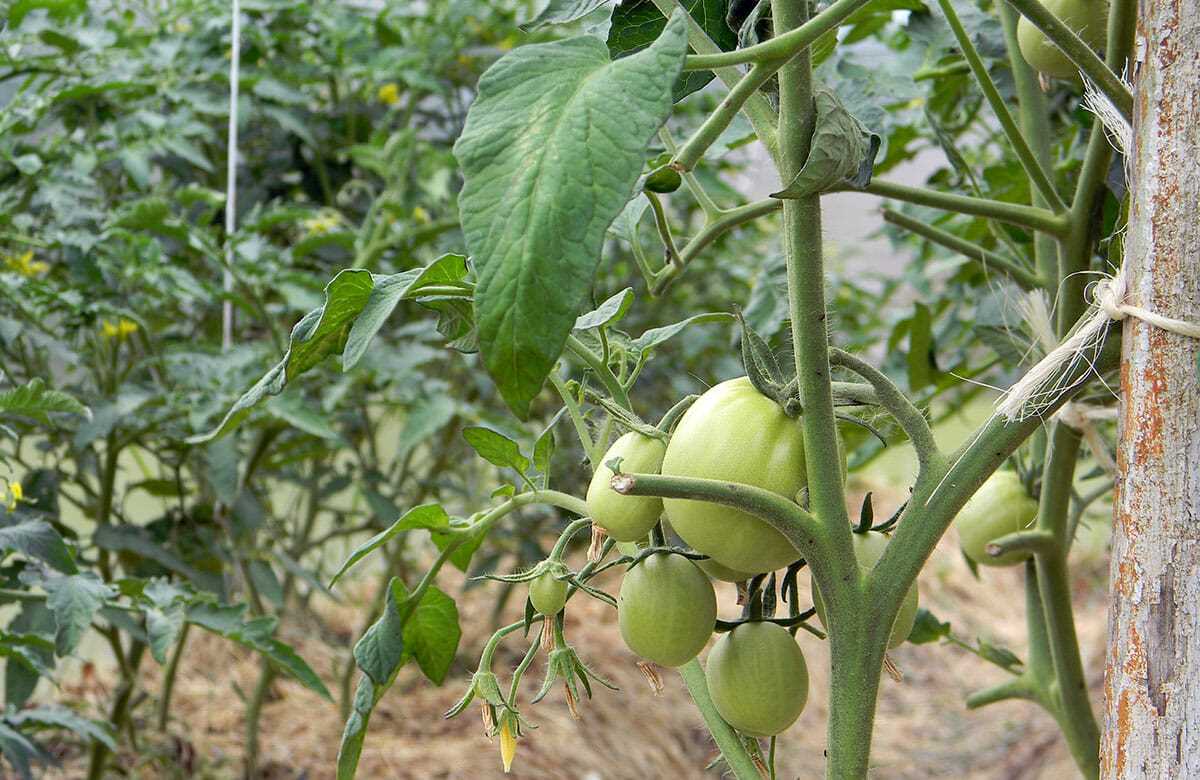
Tomato varieties can be categorized into early, mid, and late-season varieties based on their maturity time. Early-season varieties produce fruit more quickly, which is great for gardeners in cooler climates with shorter growing seasons. Mid and late-season varieties take longer to mature but often yield larger fruits later in the season.
Hybrid vs. Heirloom
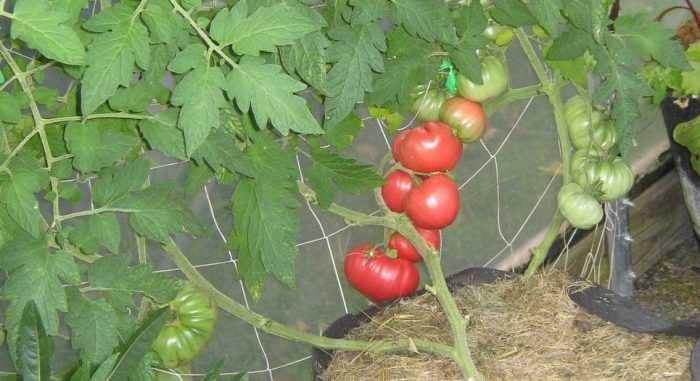
Another consideration is whether to choose hybrid or heirloom varieties. Hybrid tomatoes are bred for specific traits, such as disease resistance or uniform size, while heirloom tomatoes are open-pollinated and have been passed down through generations. Both types have their advantages, so it is a personal preference on which to choose.
By considering these factors, you can select the perfect tomato variety for your garden and ensure a successful and flavorful harvest.
Soil Preparation and Planting
Proper soil preparation is crucial for the successful growth of tomatoes. Before planting, it’s important to ensure that the soil is rich in nutrients and has good drainage. Here are some essential steps for soil preparation and planting:
1. Choose the right location:
Tomatoes require at least 6 to 8 hours of direct sunlight each day. Choose a location in your garden that receives ample sunlight and has well-draining soil. Avoid planting tomatoes in low-lying areas that tend to accumulate water.
2. Test the soil:
It’s recommended to test the soil in your chosen location before planting. A soil test will help you determine the pH level and nutrient content of the soil. Tomato plants prefer slightly acidic soil with a pH level between 6.0 and 6.8. Based on the test results, you may need to amend the soil with organic matter or fertilizers.
3. Clear the area:
Remove any weeds, rocks, or debris from the planting area. This will provide a clean and clear space for your tomato plants to grow.
4. Improve soil quality:
Enhance the soil’s fertility by adding organic matter such as compost, well-rotted manure, or peat moss. This will improve the soil’s structure, drainage, and nutrient content. Spread a layer of organic matter over the planting area and mix it into the soil using a garden fork or tiller.
5. Planting:
After preparing the soil, it’s time to plant your tomatoes. Dig a hole that is about twice as wide and deep as the root ball of the tomato seedling. Place the seedling in the hole, ensuring that the top few leaves are above the soil surface. Fill the hole with soil, gently firming it around the roots.
6. Spacing:
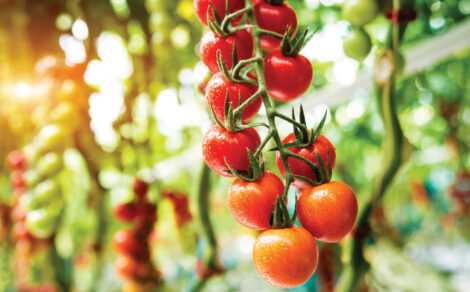
Give each tomato plant enough space to grow and spread its branches. Space the plants at least 2 to 3 feet apart to allow for proper air circulation and sunlight penetration. Proper spacing will help reduce the risk of diseases and also ensure that each plant receives adequate nutrients.
7. Watering:
After planting, water the tomato plants thoroughly. Keep the soil evenly moist, but be careful not to overwater. Tomato plants require about 1 to 1.5 inches of water per week. Water them at the root level to avoid wetting the foliage, as wet leaves can lead to disease.
8. Mulching:
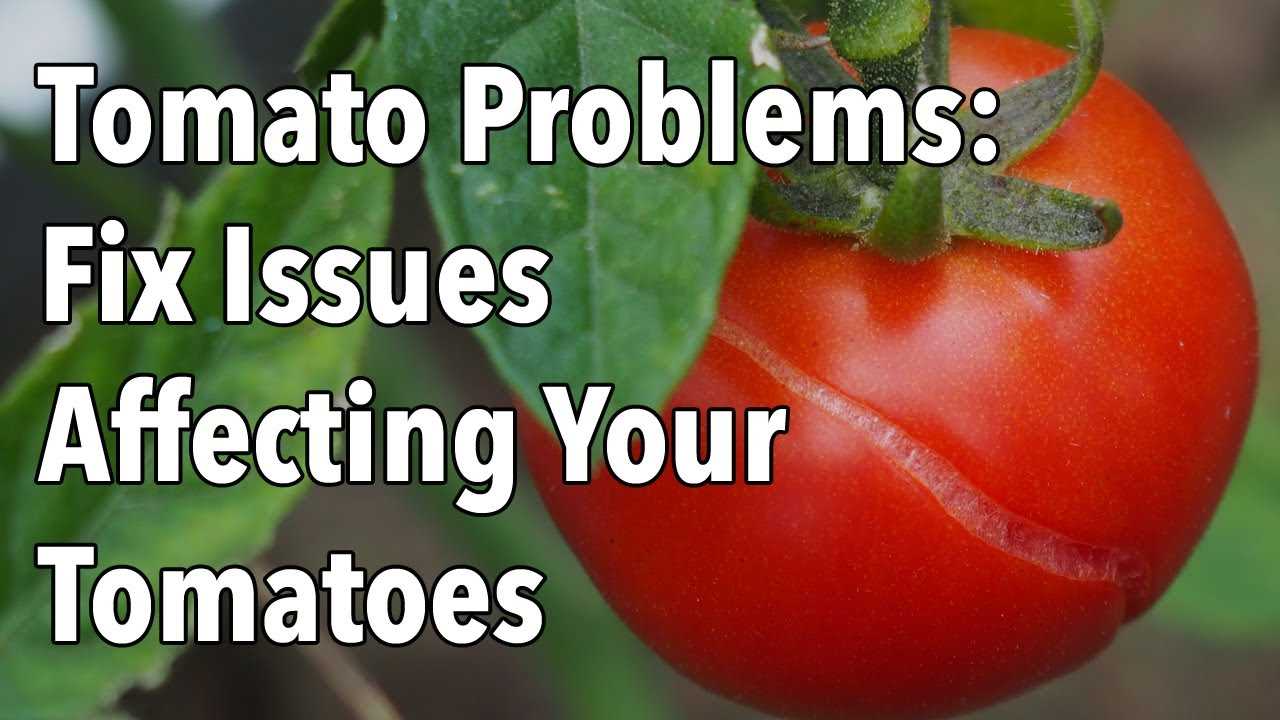
Apply a layer of organic mulch around the base of the plants to help retain moisture, suppress weeds, and regulate soil temperature. Use materials such as straw, wood chips, or shredded leaves as mulch. Avoid piling the mulch against the stem of the plants, as this can cause rotting.
By following these soil preparation and planting tips, you can create a favorable environment for your tomato plants to thrive and produce a bountiful harvest.
Watering Techniques for Tomato Plants
Proper watering is essential for the health and productivity of tomato plants. Here are some key tips and techniques to ensure your tomatoes receive the right amount of water:
- Consistent watering: Tomatoes need consistent moisture throughout the growing season. Water the plants regularly and consistently, providing enough water to keep the soil moist but not waterlogged.
- Avoid overhead watering: Instead of watering the tomatoes from above, try to water them at the base of the plants. Overhead watering can increase the risk of fungal diseases and can also disrupt the natural growth of the plant.
- Deep watering: When watering tomato plants, it’s important to water deeply and thoroughly. This encourages the roots to grow deeper into the soil, making the plants more resilient to drought and heat stress.
- Morning watering: Watering your tomatoes in the morning is generally recommended. This allows the leaves to dry out during the day, reducing the risk of fungal diseases. It also ensures that the plants have enough moisture to withstand the heat of the day.
- Use a watering can or drip irrigation: To ensure precise and targeted watering, consider using a watering can or drip irrigation system. These methods allow you to water the plants directly at the base, minimizing water waste and reducing the risk of disease.
- Monitor moisture levels: Regularly check the moisture levels of the soil around your tomato plants. Stick your finger about an inch into the soil – if it feels dry, it’s time to water. If it feels moist, hold off on watering for a day or two.
- Avoid overwatering: Overwatering can be just as damaging to tomato plants as underwatering. It can lead to root rot, nutrient leaching, and other problems. Ensure proper drainage in your garden beds and only water when necessary.
Remember, finding the right balance of moisture is key to healthy tomato plants. By following these watering techniques, you can help your tomatoes thrive and produce a bountiful harvest.
Pruning and Supporting Tomato Plants
Pruning and supporting tomato plants are essential steps in ensuring healthy growth and maximum yield. In this section, we will discuss the importance of pruning and supporting tomato plants and provide some tips for doing it effectively.
Why Prune Tomato Plants?
Pruning tomato plants helps in improving air circulation and reducing the risk of diseases. By removing the lower leaves and suckers, the plant focuses its energy on developing fruits rather than foliage. Pruning also helps in controlling the size and shape of the plants, making them more manageable and easier to care for.
When to Prune Tomato Plants?
The best time to start pruning tomato plants is when they are about 12-18 inches tall. It is crucial to prune regularly throughout the growing season to prevent the plants from becoming too bushy and overcrowded. Keep in mind that indeterminate varieties, which continue to grow and produce fruit until killed by frost, require more frequent pruning.
How to Prune Tomato Plants?
Here are a few tips for pruning tomato plants:
- Remove suckers: Suckers are the small shoots that develop in the crotch between the main stem and a branch. Pinch them off when they are small to prevent them from competing with the main stem for nutrients.
- Remove lower leaves: As the tomato plant grows, remove the lower leaves that touch the ground. This helps in preventing the spread of diseases and improves air circulation.
- Support the main stem: Use stakes, cages, or trellises to support the main stem of the tomato plant. This reduces the risk of the plant bending or breaking under the weight of fruit and allows for easier access when pruning and harvesting.
- Prune damaged or diseased branches: Regularly inspect your tomato plants for any damaged or diseased branches. Prune them immediately to prevent the spread of diseases and maintain plant health.
Supporting Tomato Plants
Supporting tomato plants is crucial to prevent them from sprawling on the ground and to ensure proper air circulation. Here are a few methods for supporting tomato plants:
- Stakes: Insert a stake into the ground next to the tomato plant and loosely tie the main stem to the stake using twine or gardening tape. As the plant grows, continue tying it to the stake at regular intervals.
- Cages: Place a tomato cage around the plant to provide support. Push the cage firmly into the ground to prevent it from tipping over. As the plant grows, gently guide the branches through the cage openings.
- Trellises: Install a trellis system behind the tomato plants and secure the main stems to the trellis using twine or clips. This allows the plants to grow vertically and saves space in the garden.
By pruning and supporting tomato plants properly, you can promote healthier growth, reduce the risk of diseases, and ultimately enjoy a bountiful harvest.
Essential Tips for Preventing Disease
When it comes to growing tomatoes, preventing disease is vital for the health and productivity of your plants. Here are some essential tips to help you keep your tomatoes disease-free:
- Choose disease-resistant varieties: Start by selecting tomato varieties that are known to be resistant to common diseases. This will give your plants a better chance of staying healthy.
- Rotate your crops: Avoid planting tomatoes in the same location year after year. This can lead to a buildup of disease-causing organisms in the soil. Rotate your tomato plants with other crops to help break the disease cycle.
- Space your plants properly: Giving your tomato plants enough space is crucial for preventing the spread of diseases. Proper spacing allows for good air circulation, which helps to keep the plants dry and reduces the risk of fungal infections.
- Practice good hygiene: Wash your hands thoroughly before handling your tomato plants, especially if you’ve been working with other plants or soil. This will help prevent the transfer of disease-causing organisms to your tomatoes.
- Water at the base: Watering your tomatoes directly at the base of the plants, rather than from above, can help prevent the spread of diseases. Water splashing on the leaves can create a moist environment that encourages the growth of fungal pathogens.
- Remove diseased plants: If you notice any signs of disease on your tomato plants, such as spots, wilting, or discoloration, remove the affected plants immediately. This will help prevent the spread of the disease to healthy plants.
- Keep your garden clean: Regularly remove any fallen leaves, fruits, or debris from the garden and around your tomato plants. These can harbor disease-causing organisms and provide a suitable environment for their growth.
- Use organic fungicides: If necessary, use organic fungicides to prevent or treat diseases on your tomato plants. Look for products that are specifically labeled for use on tomatoes and follow the instructions carefully.
Fertilising Tomato Plants
Proper fertilisation is essential for the healthy growth and development of tomato plants. Here are some tips to help you fertilise your tomato plants effectively:
1. Choose the right type of fertilizer
Tomato plants require a balanced fertilizer that contains nitrogen, phosphorus, and potassium, as well as other essential nutrients. Look for a fertilizer with an NPK ratio of around 10-10-10 or 14-14-14. This will provide the necessary nutrients for healthy plant growth.
2. Determine the timing
Start fertilising your tomato plants when they are about 3 to 4 weeks old. Apply the first round of fertilizer after the plants have established their roots. Then, continue to fertilise every 2 to 3 weeks throughout the growing season.
3. Apply the fertilizer correctly
When applying the fertilizer, sprinkle it evenly around the base of the plants, making sure to keep it away from direct contact with the leaves to avoid burning them. Use a garden fork or rake to lightly incorporate the fertilizer into the soil. Water the plants thoroughly after fertilising to help nutrients penetrate the soil.
4. Use organic options
If you prefer organic gardening, there are several organic fertilisers available that are suitable for tomato plants. Organic fertilisers, such as compost, manure, or fish emulsion, provide nutrients slowly and improve soil structure over time.
5. Monitor plant health
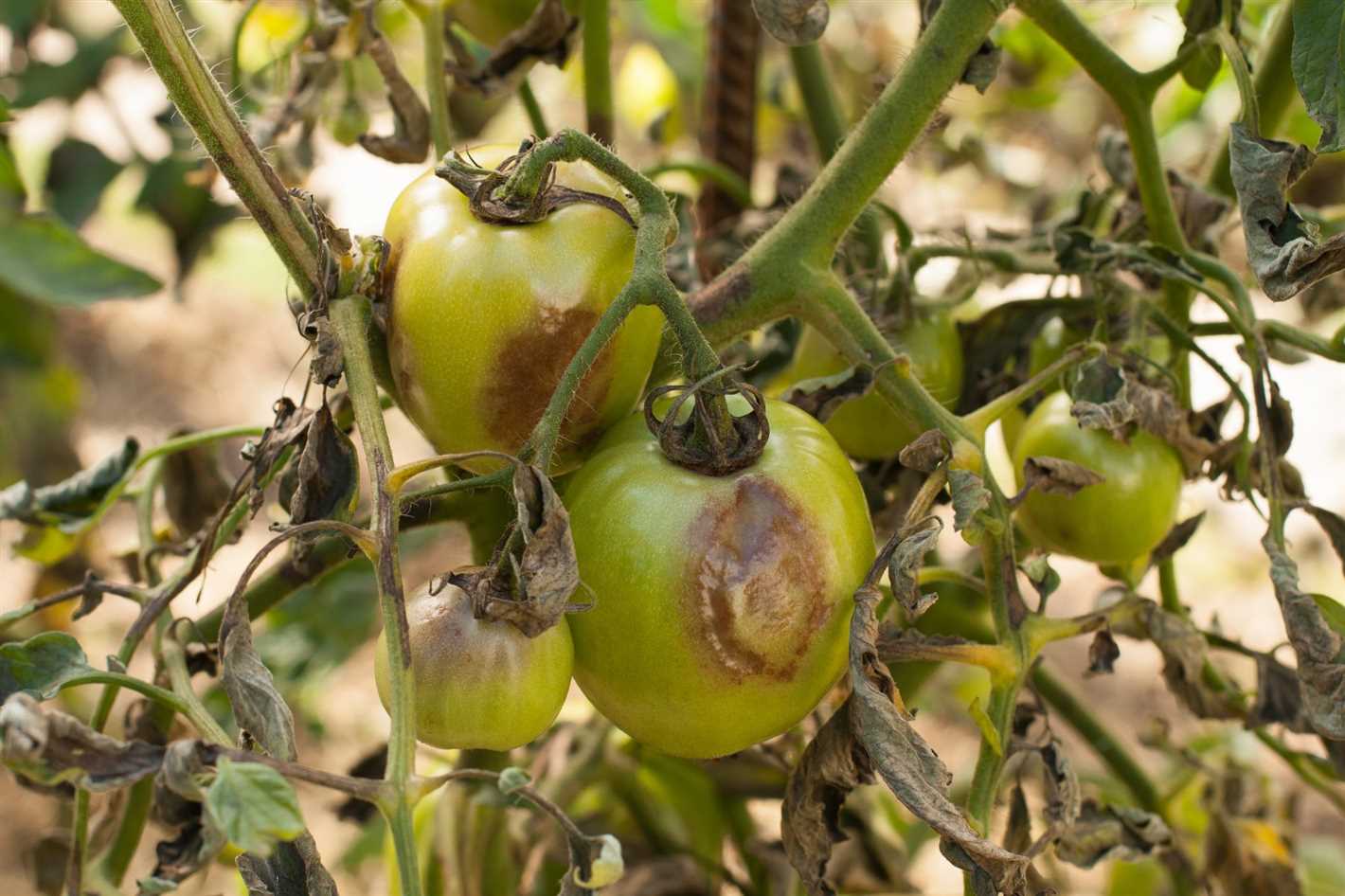
Regularly monitor the health of your tomato plants to determine if they need additional fertilisation. Signs of nutrient deficiency include yellowing leaves, slow growth, and poor fruit production. Adjust your fertilisation schedule or consider adding additional nutrients if necessary.
By following these tips, you can ensure that your tomato plants receive the right nutrients at the right time, leading to healthy growth and a bountiful harvest.
Tomato Plant Care and Maintenance
Watering
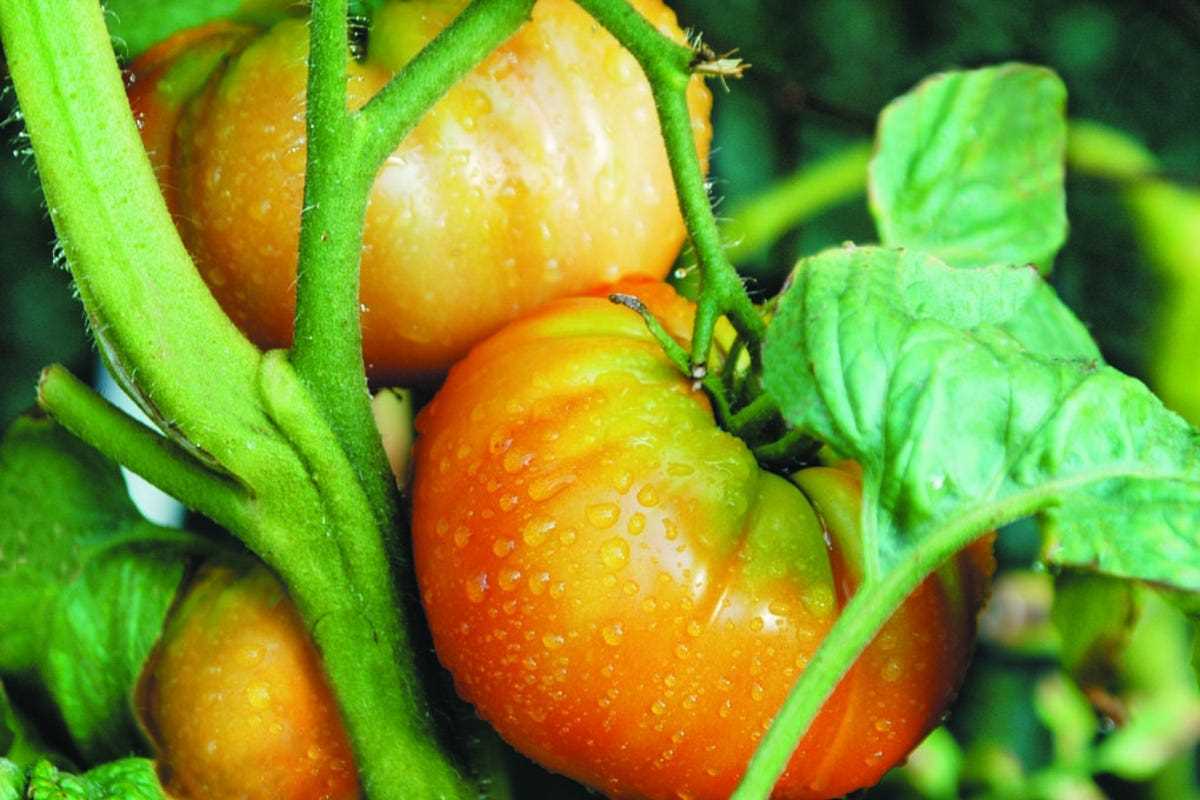
Proper watering is essential for the health and productivity of tomato plants. It is important to keep the soil consistently moist, but not waterlogged. Avoid overwatering, as it can lead to root rot and other diseases. When watering, aim to water deeply at the base of the plant rather than spraying the entire plant.
Fertilizing
Tomato plants are heavy feeders and need regular fertilization to thrive. Before planting, incorporate a slow-release organic fertilizer into the soil. Once the plants are established, apply a balanced fertilizer every two to three weeks. Avoid excessive nitrogen fertilizers, as they can promote leaf growth at the expense of fruit production.
Pruning
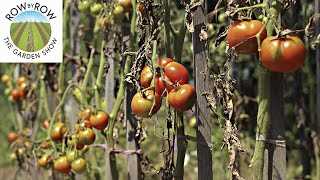
Pruning tomato plants helps improve air circulation and reduces the risk of diseases. Remove any suckers that develop in the leaf axils, as they can divert energy from the main stem. Additionally, remove any yellowing or diseased leaves to prevent the spread of infection.
Supporting
Tomato plants benefit from support to keep the fruit off the ground and prevent damage. Use stakes, cages, or trellises to support the plants as they grow. Gently tie the main stem to the support structure using soft twine or garden tape.
Pest Management
Regularly monitor tomato plants for common pests such as aphids, whiteflies, and tomato hornworms. If an infestation is detected, use organic pest management methods such as handpicking or spraying with insecticidal soap. Avoid using chemical pesticides, as they can be harmful to beneficial insects and the overall ecosystem.
Disease Prevention
To prevent diseases such as blight and mold, practice crop rotation by avoiding planting tomatoes in the same spot for consecutive years. Ensure proper spacing between plants to promote good air circulation. Remove any infected leaves or fruits immediately to prevent the spread of infection.
Harvesting
Tomatoes are ready to be harvested when they are fully colored and firm. Gently twist or cut the fruit from the plant, being careful not to damage the stem or other parts of the plant. Harvest regularly to encourage continued fruit production.
Storage
Store harvested tomatoes in a cool, dry place away from direct sunlight. Avoid storing them in the refrigerator, as it can affect their flavor and texture. Use ripe tomatoes within a few days or consider preserving them by canning or freezing.
| Task | Timing |
|---|---|
| Watering | Consistently moist soil |
| Fertilizing | Every 2-3 weeks |
| Pruning | As needed |
| Supporting | As plants grow |
| Pest management | Regular monitoring |
| Disease prevention | Throughout the growing season |
| Harvesting | When tomatoes are fully colored and firm |
Harvesting and Storing Tomatoes
Once your tomatoes have ripened, it’s time to harvest and store them properly to extend their shelf life and preserve their flavor. Here are some essential tips:
1. Harvesting:
- Tomatoes are ready for harvest when they have reached their mature color and are slightly soft to the touch.
- Twist or cut the tomatoes off the vine with a pair of garden shears, leaving a small portion of the stem intact.
- Handle the tomatoes gently to avoid bruising or damaging the fruit.
2. Sorting:
- Sort your harvested tomatoes into different categories based on ripeness and condition.
- Separate the tomatoes with blemishes, cracks, or signs of decay from the healthy ones.
3. Cleaning:
- Gently wash the tomatoes under cool running water to remove any dirt or debris.
- Avoid using soap or detergents as they can leave residues on the skin.
- Pat dry the tomatoes with a clean towel to remove excess moisture.
4. Storing:
- Store your tomatoes at room temperature if you plan to use them within a few days.
- Keep them in a single layer to prevent crushing or bruising.
- Avoid placing tomatoes in direct sunlight or near heat sources.
- If you have unripe tomatoes, store them in a paper bag with a ripe banana or apple to speed up the ripening process.
5. Long-term Storage:
- If you have a large harvest or want to store tomatoes for a longer period, consider preserving them by canning or freezing.
- For canning, follow a trusted recipe and process the jars using a water bath or pressure canner.
- For freezing, blanch the tomatoes in boiling water for a minute, shock them in ice water, remove the skins, and freeze them in airtight containers or freezer bags.
- Remember to label and date your jars or freezer bags for easy identification.
By following these harvesting and storing tips, you can enjoy the flavor of homegrown tomatoes long after the growing season is over.
“Question-Answer”
What are the essential tips for preventing diseases in tomatoes?
There are several essential tips for preventing diseases in tomatoes. First, it is important to choose disease-resistant tomato varieties. Additionally, practicing crop rotation and maintaining good sanitation in the garden can help prevent the spread of diseases. Proper spacing between plants, adequate water drainage, and regular inspection for signs of diseases are also important measures to take. Lastly, using fungicides and pesticides as a preventive measure can help protect tomatoes from diseases.
How can I fertilize my tomatoes?
There are a few ways to fertilize tomatoes. One option is to use compost or well-rotted manure as a natural fertilizer. These can be added to the soil before planting or applied as a side dressing during the growing season. Another option is to use a balanced granular fertilizer that is specifically formulated for tomatoes. This fertilizer should be applied according to the instructions on the package. It is important to avoid over-fertilizing tomatoes, as this can lead to excess foliage growth and reduced fruit production.
What is the best way to care for tomatoes?
Caring for tomatoes involves several important steps. First, tomatoes should be planted in a sunny location with well-drained soil. Regular watering is important, especially during dry periods, to ensure the plants receive adequate moisture. Tomatoes also benefit from staking or caging to support the plants and prevent them from sprawling on the ground. Pruning is another important aspect of tomato care, as it helps improve air circulation and reduce the risk of diseases. Finally, regular inspection for pests and diseases should be done, and appropriate measures should be taken to address any issues that arise.
Can you give me some tips for preventing diseases in tomatoes?
Sure! Here are some tips for preventing diseases in tomatoes. First, choose disease-resistant tomato varieties to reduce the risk of infections. Next, practice crop rotation by not planting tomatoes in the same spot every year. This helps prevent diseases from building up in the soil. Additionally, maintain good garden sanitation by removing any diseased plants or plant debris. Adequate spacing between tomato plants, proper watering techniques, and regular inspection for signs of diseases are also important preventive measures. Using organic fungicides or pesticides when necessary can further protect tomatoes from diseases.
What are the key steps to fertilizing tomatoes?
The key steps to fertilizing tomatoes involve choosing the right fertilizer and applying it correctly. You can use compost or well-rotted manure as natural fertilizers to enrich the soil before planting. Granular fertilizers specifically formulated for tomatoes are also available, and they should be applied according to the instructions on the package. It is important to fertilize tomatoes at the right time, usually when they start to produce flowers. Be careful not to over-fertilize, as this can negatively impact fruit production. Applying a balanced fertilizer and ensuring proper soil moisture are key to fertilizing tomatoes successfully.
How do I take care of my tomato plants?
To take care of tomato plants, ensure they are planted in a sunny location with well-drained soil. Water the plants regularly, especially during dry spells, to prevent them from drying out. It is also important to stake or cage the tomato plants to support their growth and prevent them from sprawling on the ground. Pruning the plants by removing suckers and unwanted branches helps improve air circulation and reduce the risk of diseases. Finally, regularly inspect the plants for signs of pests or diseases and take appropriate measures to address any issues that arise.
Are there any tips for preventing disease in tomatoes?
Absolutely! Here are some tips for preventing diseases in tomatoes. First, choose disease-resistant tomato varieties whenever possible. These varieties are bred to have increased resistance to common tomato diseases. Practice crop rotation by not planting tomatoes in the same spot each year, as this helps prevent the buildup of diseases in the soil. Maintain good sanitation in the garden by removing any diseased plants or plant debris. Adequate spacing between plants, proper watering techniques, and regular inspection for signs of diseases are also essential preventive measures. When necessary, use organic fungicides or pesticides to protect tomatoes from diseases.







